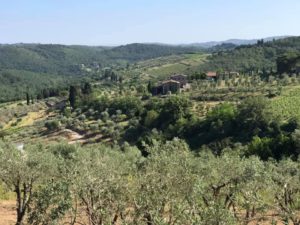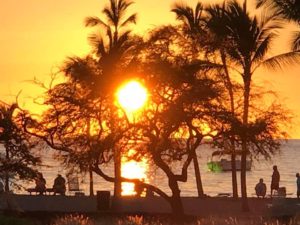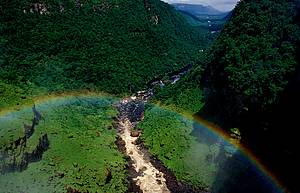Slow-flowing water powers eGen system

The first few models that inventor Joel Douglas made he tested in his bathtub.
Then he tested bigger versions, in a swimming pool and a large tank, before moving to the waters behind Mystic Seaport.
On Wednesday afternoon, Douglas and other members of a small Groton-based company, eGen LLC, demonstrated a prototype that can produce electricity from slow-moving water such as the Mystic River.
As a slow, inflatable boat carrying the mechanism passed a dock behind the museum, an array of light bulbs began to glow as water flowing over a small, rotating cylinder created electricity.
Company officials said that unlike large hydropower systems that require faster water, tides or dams, the eGen system works in slow-moving water, is environmentally friendly and does not kill animals and plants that get sucked into revolving blades.
“That’s the beauty of the system. It doesn’t chop up the flora and fauna,” Douglas said.
The system that produces 25 kilowatts and can power several hundred homes is also small enough – at 12 feet square – to be suspended under a dock. It can generate electricity from water that moves as slow as one foot per second compared to the 10 feet per second needed by traditional hydropower systems.
While other firms are testing the viability of wave and ocean tidal power, including a Massachusetts firm that envisions a series of large turbines on the floor of The Race generating massive amounts of power, those systems could be expensive to build and maintain.
Company President Frank Gerlando said his firm is the only one he knows of that has designed systems for slow-moving water that will be much less expensive than ones used in swift water.
Gerlando and Douglas said the company, which has 30 employees in Groton, New York and Florida, will shortly begin designing and building larger, commercially viable units.
With 2 billion of the world’s population lacking access to electricity, Gerlando said, the system will be especially attractive to developing nations that cannot afford the expense of extending power grids to remote areas. He also noted that 90 percent of the water resources around the world are slow moving. But the system is not just restricted to streams and rivers, and users would not even have to live near a body of water.
Gerlando said his firm is also looking into installing the system in buildings where the flow of water, sewage and other fluids through pipes could generate electricity for the building.
It also has applications for military bases that do not want to be part of an electric grid for security reasons.
“My long-term vision is to someday have these on the shelf at Home Depot,” he said.
Gerlando thanked the Seaport for being a great partner and host for its testing. He said the Mystic River is an ideal location to test the system because of its speed.
“We applaud them for being proactive and using an abundant natural resource that they have available to them,” he said about museum officials.
The Seaport will now begin using an eGen unit to power one of the launches it uses to carry visitors from one part of the museum to another. It will also look at other possible uses of the system.
Article from The New London Day






